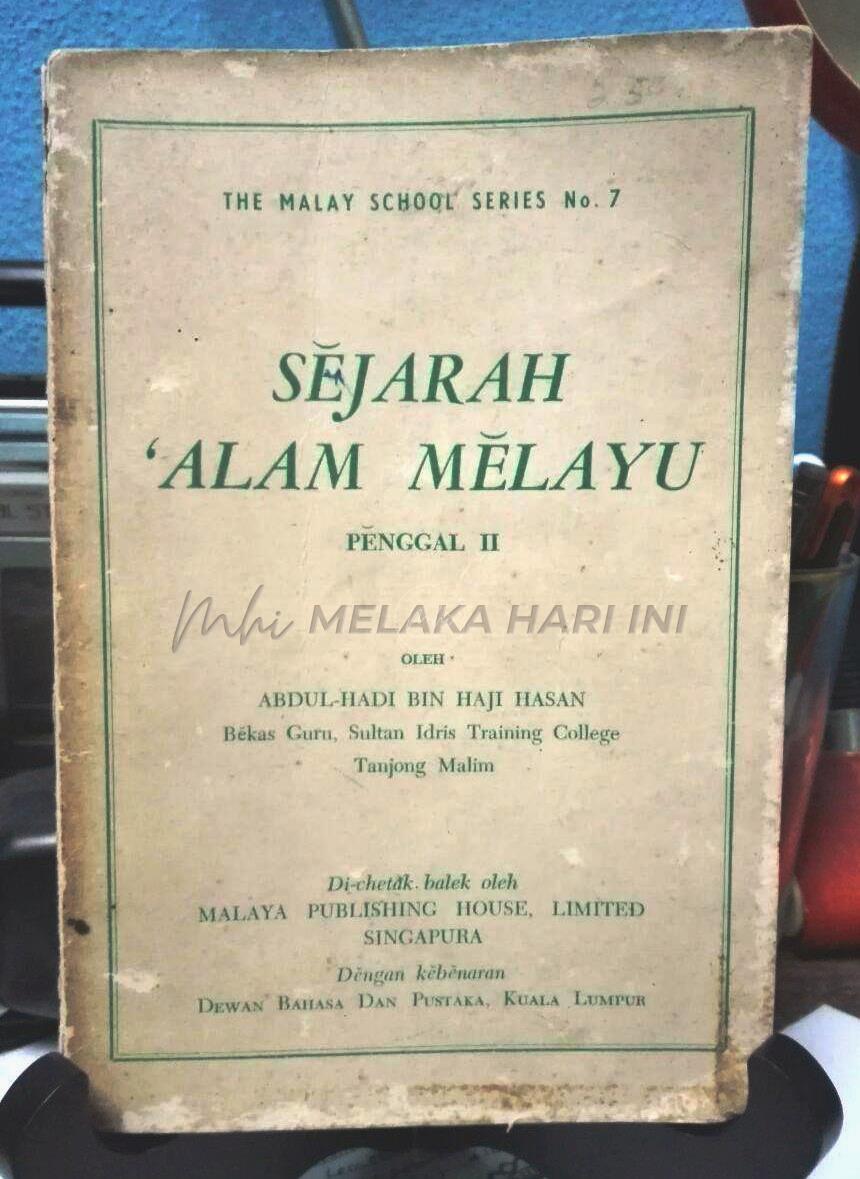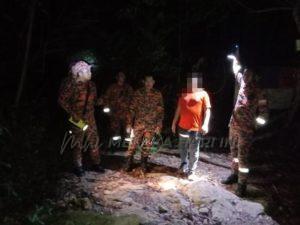
Textbooks, Bookstores and Malay History: Abdul Hadi Haji Hasan’s Sejarah Alam Melayu
THE teaching of history and geography with a clear “Malay-orientation” has been argued to have contributed towards students developing a Malay ethno-national consciousness. Narratives tell us of identity formation. This is true of history and geography textbooks produced by the Sultan Idris Training College (SITC) in the 1920s.
Abdul Hadi Haji Hasan, born in Kampong Batang Tiga, Melaka in 1900, taught history at SITC – the college in Tanjong Malim, from 1922 to 1929. With him was Buyong Adil, an SITC history teacher, who was taught history by Abdul Hadi himself. Buyong is well known as a writer of Malaysian history. His books are still sold in the market. Abdul Hadi is hardly known publicly. Buyong in 1956 recalled that it was Abdul Hadi who implanted the perasaan kebangsaan (nationalist sentiments), develop his student’s attachment for their bangsa (nation) and tanah ayer (tanah air/homeland).
In 1924, SITC established the Jabatan Karang Mengarang (Translation Bureau). The department was tasked to publish textbooks and readers for Malay vernacular schools from the Department of Education, the Straits Settlement, and the Federated Malay States. These were were published as the “Malay School Series”. While many were translations of English textbooks, some were newly written, like the five volumes of Sejarah Alam Melayu by Abdul Hadi and Buyong. Publications of the Malay School Series between 1924 and 1936 included 32 textbooks, 10 readers, two books on handicraft, and others.
Soda Naoki of the Tokyo University of Foreign Studies in his study titled Conceptualizing the Malay World: Colonialism and Pan-Malay Identity in Malaya (2020) concentrates on the teaching of history and geography in Malay-medium schools in relating colonial knowledge to national consciousness. Apart from the works of Abdul Hadi, the author’s other focus is Ibrahim Haji Yaacob.
In his book, Naoki enumerates that the Bureau produced 36 publications under the “Malay Home Library Series” comprising Malay translations of stories and novels. These included Malay translations of Treasure Island, Robin Hood, Aladdin and the Wonderful Lamp and Ali Baba and the 40 Thieves. And Sherlock Homes was no stranger through the many decades after 1957. On the Malay School Series, Naoki argues that some of the textbooks, in particularly history textbooks, played an important role in creating a Malay identity. Abdul Hadi was a key figure. These were delivered through regular classes and readings, occasional lectures and speeches. There were also Saturday night lectures in the college hall exposing students to nationalism, getting them to think about their national identity. He and other teachers attempted to develop a strong sense of Malay identity among students, hinting that the Malays could be regarded as a “potential nation.”
Abdul Hadi, who wrote the first three volumes of Sejarah Alam Melayu (History of the Malay World) in 1925, 1926 and 1929 was regarded by Naoki as “a historian of the Malay world.” The Sejarah Alam Melayu is reported to be the first book of Malay history written by a Malay writer in the style of modern historiography. He has also been described as “the first Malay to attempt to write historiography of the Malay peninsula as a whole”, and also as “the first Malay intellectual who was given the task of imposing British concepts of history on Malay teachers through his textbooks through his vernacular schools,” says Henk Maier (1988), a scholar of Malay text and society.
Abdul Hadi’s work served as a textbook for teacher and students in Malay schools and teacher training colleges. They were printed several times between 1925 and 1929 with print runs ranging from 2,000 copies to 5,000 copies. His work was progressivist and Eurocentric. He shared his perception of time and that of periodization with the likes of Wilkinson and Winstedt.
On a pertinent note, Abdul Hadi Haji Hasan also co-owned a bookstore in Tanjong Malim – the AHMY & Company. His partner was Md. Yusuf Md. Sharif, a government clerk. In the 1920s and 1930s, bookstores in the town played a vital role in the acquisition of knowledge by SITC students outside the curriculum. Now there seems to be only one so-called bookstore. A wakil pengedar (distributor representative) of one of the nation’s major publishers which stocked some Bahasa Melayu books and magazines until about six years ago, is now defunct. Abdul Hadi’s bookstore sold Malay books, newspapers and magazines published in British Malaya, the Netherlands East Indies and the Middle East. Tanjong Malim was then the hub of a vibrant intellectual, political and cultural community.
Students in the town were exposed to Indonesian nationalism from the periodicals and books, as well as collection of speeches from Sukarno Mohammad Hatta, Adi Negoro, Muhammad Yamin, Sutan Sjahrir, and Tan Malaka. They were cosmopolitan in outlook. Bahasa Melayu newspapers published in the Netherlands East Indies such as Bintang Timur, Bintang Hindia; and Seruan Azhar from Cairo were available.
This year the college celebrates its 100th anniversary as Universiti Pendidikan Sultan Idris (UPSI). Times have changed. The consciousness of nationhood and identity are configured, perhaps remediated many times over by a different set knowledge, media environment, and consciousness. There is a bookshop selling books published by UPSI stashed inconspicuously below the entrance of the university library building, which seems clueless as to the past of the Jabatan Karang Mengarang and the spirit of Abdul Hadi and his comrades.
It would also be good to have a bookstore in town, not only seriously selling books of the history, society, and politics type, but manifesting the intellectual icon that Tanjong Malim was. The proposed bookshop should well be the centre for public discourse on Malaysian modern history and civilization. Going by the response on the recent Kuala Lumpur Book Fair, I am sure there is a huge market. The growth of independent booksellers, and those who trade in curated and rare books over the last few years should well make Tanjong Malim the place for books and ideas; and redefine ideas about books.
#####
Langgani saluran Telegram kami untuk dapatkan berita-berita yang terkini.


